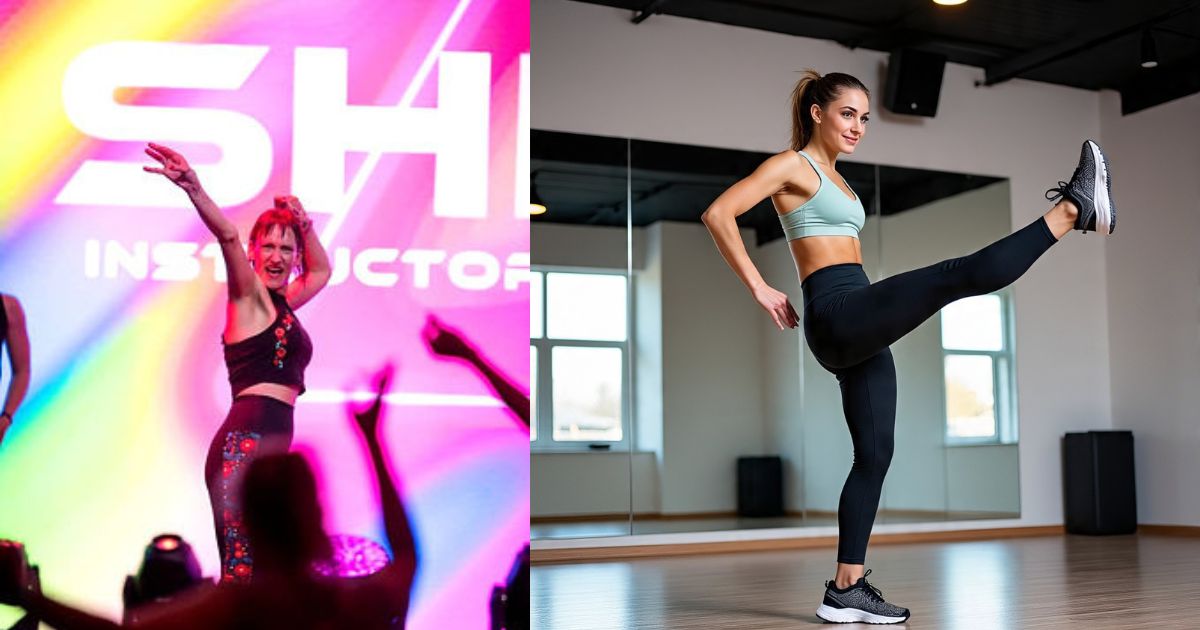Introduction
The fitness industry has witnessed a significant transformation in recent years, moving beyond traditional gym workouts and weightlifting to more engaging and dynamic forms of exercise. Among these, dance fitness has emerged as one of the most popular and enjoyable workout trends. At the heart of this movement are certified dance fitness instructors, professionals who combine music, choreography, and fitness techniques to help people stay active and healthy while having fun.
In this article, we will explore what it means to be a certified dance fitness instructor, the roles and responsibilities involved, the certification process, and why this career path is becoming increasingly attractive worldwide.
What is a Certified Dance Fitness Instructor?
A certified dance fitness instructor is a trained professional who leads group or individual fitness classes using dance-based movements. These instructors are certified by recognized fitness organizations or dance fitness programs, ensuring that they have the skills, knowledge, and expertise to teach safe, effective, and enjoyable dance workouts.
Unlike traditional dance instructors, whose focus is primarily on artistic performance, a dance fitness instructor emphasizes physical conditioning, cardiovascular health, and overall well-being through dance-inspired exercises.
To understand the broader concept, refer to Wikipedia’s article on Group fitness instructors, which provides insights into the qualifications and responsibilities of professionals leading group exercise programs.
Why Become a Certified Dance Fitness Instructor?
There are several reasons why fitness professionals and dance enthusiasts choose this career path:
- Growing Demand for Dance Fitness Classes
Dance fitness programs like Zumba, Dance Cardio, and Hip-Hop Fitness have become global trends. This popularity means a high demand for certified instructors. - Fun and Engaging Career
Teaching dance fitness classes is lively, energetic, and interactive, making it one of the most enjoyable careers in the fitness industry. - Health and Wellness Impact
Instructors play a crucial role in improving clients’ cardiovascular health, coordination, flexibility, and mental well-being. - Flexible Opportunities
Certified instructors can work in gyms, community centers, studios, or even online platforms, allowing flexibility in schedule and location.
Key Responsibilities of a Certified Dance Fitness Instructor
A certified dance fitness instructor is more than just a choreographer. Their responsibilities include:
- Designing Workouts: Creating routines that combine dance steps with fitness elements like cardio, strength, and flexibility training.
- Teaching and Motivating Participants: Leading sessions with energy and enthusiasm to keep participants engaged.
- Ensuring Safety: Monitoring participants for proper form to prevent injuries.
- Music Selection: Choosing tracks that align with class intensity and choreography.
- Progress Monitoring: Helping clients achieve fitness goals and tracking improvements.
Popular Dance Fitness Programs for Certification
Several internationally recognized programs offer certifications for aspiring instructors. The most popular include:
1. Zumba® Fitness
Zumba is one of the most widely recognized dance fitness programs worldwide. A Zumba Instructor License allows professionals to teach Zumba classes in gyms and studios.
2. Dance Cardio
A high-energy workout that combines dance moves with aerobic exercises.
3. Barre Fitness
A combination of ballet, Pilates, and yoga, focusing on strength and flexibility.
4. MixxedFit®
A dance fitness format that blends explosive dance movements with bodyweight exercises.
How to Become a Certified Dance Fitness Instructor
The certification process involves several steps:
1. Meet the Prerequisites
Most programs require candidates to be at least 18 years old. Some may recommend a background in fitness or dance, but it is not mandatory.
2. Choose a Certification Program
Popular certifying organizations include:
- Zumba®
- American Council on Exercise (ACE)
- Athletics and Fitness Association of America (AFAA)
3. Complete Training
Training sessions may be in-person or online and usually include:
- Dance choreography techniques
- Anatomy and physiology basics
- Safety guidelines
- Music mapping and timing
4. Pass the Exam
Some certifications require an exam or practical demonstration to ensure you meet the program standards.
5. Maintain Certification
Many organizations require instructors to earn continuing education credits (CECs) to stay updated on trends and maintain certification.
Skills Required to Succeed as a Certified Dance Fitness Instructor
Becoming a certified instructor requires more than dance skills. Essential qualities include:
- Strong Communication Skills: To engage and motivate participants.
- Musicality: Ability to synchronize movements with music.
- Fitness Knowledge: Understanding how to create effective and safe workouts.
- Adaptability: Catering to different fitness levels in one class.
- Positive Energy: Keeping the class upbeat and enjoyable.
Benefits of Being a Certified Dance Fitness Instructor
1. Career Opportunities
You can teach in gyms, fitness centers, community halls, corporate wellness programs, and even online via streaming platforms.
2. Entrepreneurial Freedom
Many instructors open their own studios or conduct independent workshops.
3. Personal Fitness
Teaching dance fitness classes keeps you physically active and healthy.
4. Global Community
Certified instructors join a network of fitness professionals worldwide, opening opportunities for collaboration.
Challenges in This Career Path
Like any profession, being a dance fitness instructor comes with challenges:
- Physical Demand: Teaching multiple classes daily can be exhausting.
- Constant Learning: Instructors must keep updating choreography and fitness trends.
- Competition: The industry is growing, so standing out requires creativity and branding.
- Income Variability: Earnings may depend on class size, location, and reputation.
Average Salary of Certified Dance Fitness Instructors
Earnings can vary based on experience, location, and the number of classes taught. On average:
- In the U.S.: $20–$50 per class.
- Online Classes: Instructors can charge $5–$15 per participant, allowing scalability.
Dance Fitness vs Traditional Fitness Training
| Aspect | Dance Fitness | Traditional Fitness |
|---|---|---|
| Focus | Fun, rhythmic movement | Strength and endurance |
| Equipment | Minimal | Often requires weights/machines |
| Audience | All age groups | Typically fitness enthusiasts |
The Role of Music in Dance Fitness
Music is the heartbeat of dance fitness. Instructors must have an excellent sense of rhythm, tempo, and beats per minute (BPM) to design routines that flow naturally with the music. This enhances participant engagement and ensures the workout is both fun and effective.
Online Certification and Virtual Classes
With the rise of virtual fitness, many instructors now teach online classes via platforms like Zoom or YouTube. Certification programs have also adapted, offering online training modules, making it easier for aspiring instructors to get certified from home.
How to Market Yourself as a Certified Dance Fitness Instructor
- Social Media Presence: Share videos of routines, client testimonials, and fitness tips.
- Networking: Join fitness communities and attend workshops.
- Branding: Develop a unique style or theme for your classes.
- Specialization: Offer niche formats like prenatal dance fitness or senior-friendly classes.
Future of Dance Fitness Careers
As wellness becomes a global priority, dance fitness is expected to grow rapidly, driven by:
- Increased demand for fun, stress-relieving workouts.
- Expansion of virtual classes worldwide.
- Integration of AI and fitness apps to personalize sessions.
Conclusion
A certified dance fitness instructor is more than just a teacher—they are a motivator, entertainer, and health advocate. With proper certification, passion, and creativity, this career can be rewarding both personally and financially. Whether you love dancing, want to inspire others to lead healthier lives, or seek a flexible, fun-filled profession, becoming a certified dance fitness instructor is an excellent choice.




